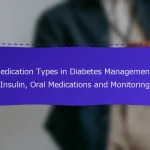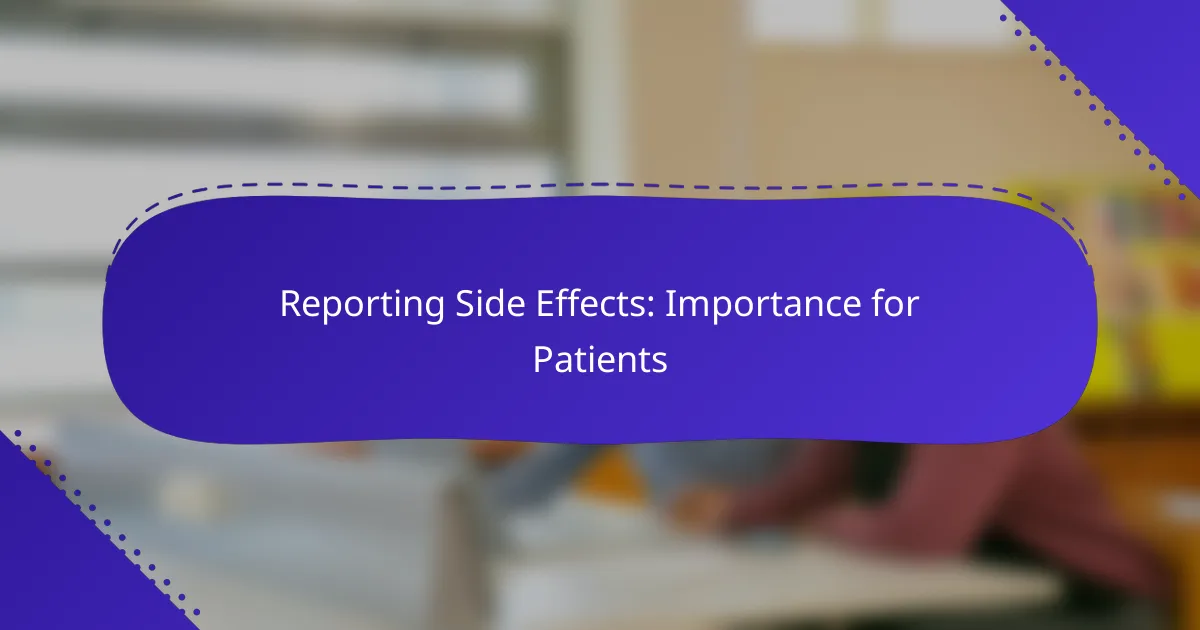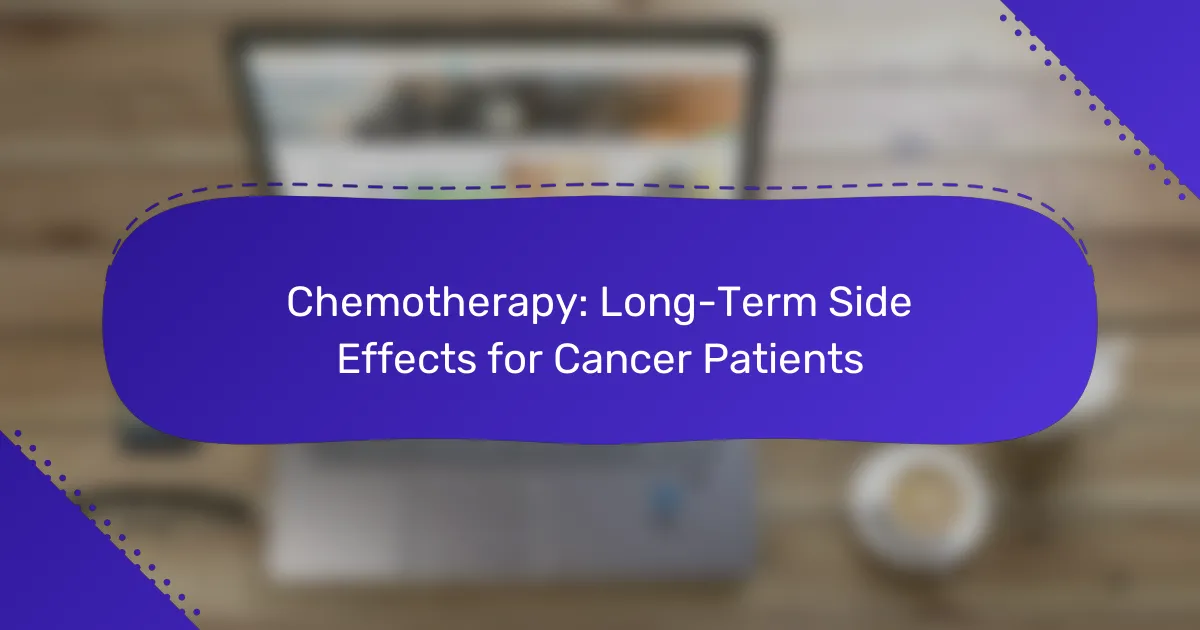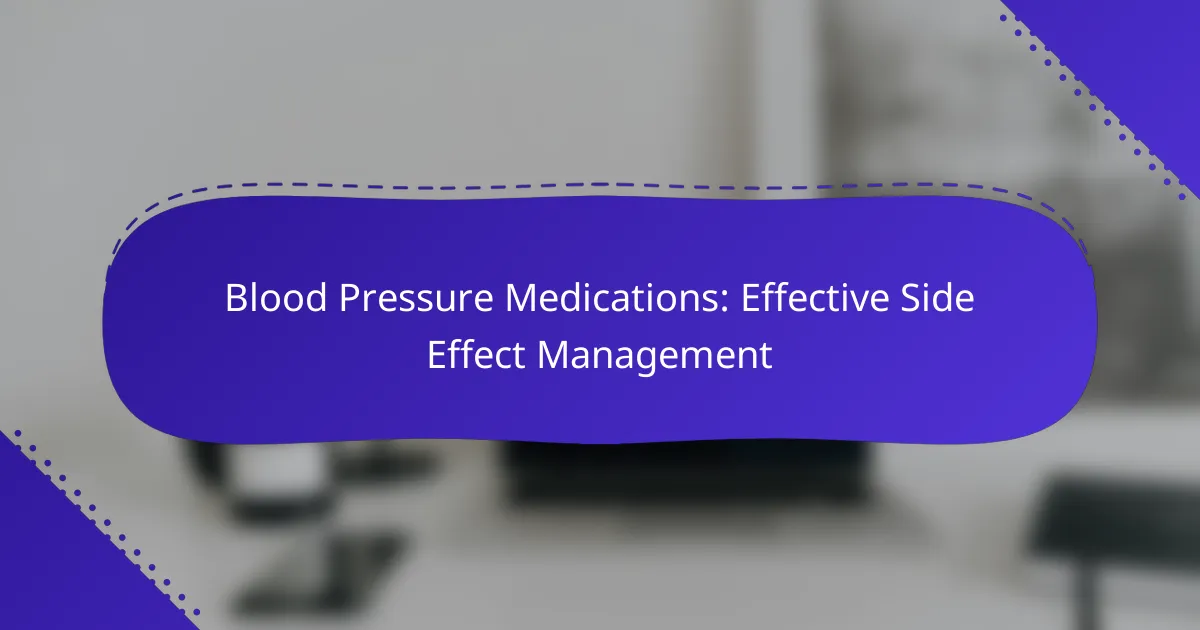Pranešimas apie šalutinius poveikius yra labai svarbus pacientams Lietuvoje, nes tai padeda užtikrinti jų saugumą ir pagerina vaistų veiksmingumą. Dalindamiesi savo patirtimi, pacientai prisideda prie bendro supratimo, kuris gali pagerinti sveikatos priežiūros rezultatus.

Why is reporting side effects important for patients in Spain?
Reporting side effects is crucial for patients in Spain as it helps ensure their safety and enhances the overall effectiveness of medications. By sharing their experiences, patients contribute to a collective understanding that can lead to improved healthcare outcomes.
Enhances patient safety
Reporting side effects directly enhances patient safety by identifying potential risks associated with medications. When patients report adverse reactions, healthcare providers can monitor these effects and take necessary actions to mitigate risks.
For instance, if multiple patients report similar side effects, healthcare authorities can investigate further, possibly leading to updated guidelines or warnings. This proactive approach helps protect patients from harmful experiences.
Improves medication effectiveness
When patients report side effects, it allows for a better understanding of how medications work in real-world scenarios. This feedback can lead to adjustments in dosages or treatment plans, ultimately improving medication effectiveness.
For example, if a significant number of patients experience side effects at a certain dosage, healthcare providers may recommend a lower dose to enhance tolerance while maintaining therapeutic benefits.
Supports regulatory compliance
Reporting side effects is essential for regulatory compliance in Spain, as it helps pharmaceutical companies and regulatory bodies fulfill their obligations to monitor drug safety. Accurate reporting ensures that all adverse effects are documented and assessed.
Patients play a vital role in this process; their reports can lead to regulatory actions such as label changes, safety communications, or even product recalls, ensuring that medications remain safe for public use.
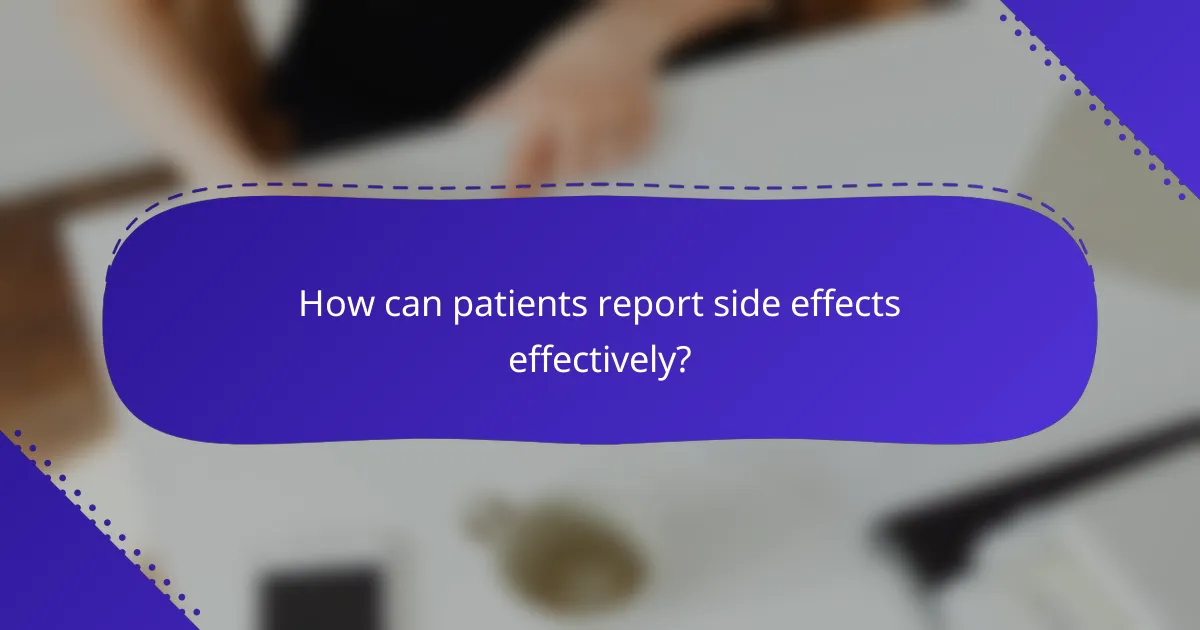
How can patients report side effects effectively?
Patients can report side effects effectively by utilizing various channels that ensure their feedback reaches the appropriate authorities. This process helps improve medication safety and informs healthcare providers about potential risks.
Using official health apps
Many countries offer official health apps that allow patients to report side effects directly. These apps often feature user-friendly interfaces that guide users through the reporting process, making it straightforward to submit information about adverse reactions.
For example, in Lithuania, the National Medicines Agency has an app where patients can easily log their experiences. This method ensures that reports are collected systematically and can be analyzed for safety trends.
Contacting healthcare providers
Patients can also report side effects by contacting their healthcare providers directly. This can be done during a routine appointment or through a phone call, where patients can discuss their experiences and concerns.
Healthcare providers are trained to document these reports and may offer advice on managing side effects or adjusting treatment plans. It’s important for patients to be as detailed as possible when describing their symptoms to facilitate accurate reporting.
Filing reports through government websites
Another effective way to report side effects is through government health websites dedicated to pharmacovigilance. These platforms typically provide forms that patients can fill out to submit their experiences.
In Lithuania, the National Medicines Agency’s website includes a section for reporting adverse drug reactions. Patients should ensure they provide all necessary information, such as the medication name, dosage, and a description of the side effects, to enhance the quality of the report.
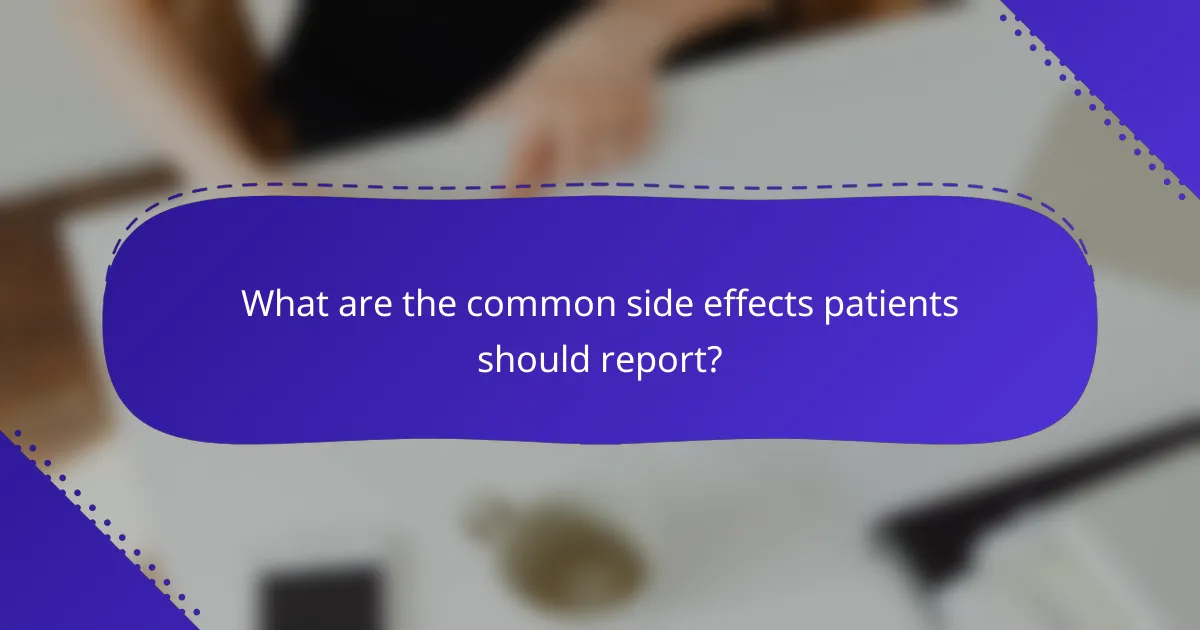
What are the common side effects patients should report?
Patients should report any side effects they experience, as these can indicate how a medication is affecting their health. Common side effects include gastrointestinal issues, allergic reactions, and neurological symptoms, all of which can vary in severity and impact daily life.
Gastrointestinal issues
Gastrointestinal issues often manifest as nausea, vomiting, diarrhea, or constipation. These symptoms can significantly affect a patient’s quality of life and may require medical attention if they persist or worsen.
Patients should monitor the frequency and severity of these symptoms. Keeping a record can help healthcare providers determine whether the issues are related to medication or other factors.
Allergic reactions
Allergic reactions can range from mild rashes to severe anaphylaxis. Symptoms may include itching, swelling, or difficulty breathing, which require immediate medical intervention.
It is crucial for patients to report any signs of an allergic reaction as soon as they occur. Early reporting can lead to timely treatment and prevent more serious complications.
Neurological symptoms
Neurological symptoms may include headaches, dizziness, or changes in mood and cognition. These symptoms can indicate how a medication affects the nervous system and should be taken seriously.
Patients experiencing these symptoms should discuss them with their healthcare provider, especially if they are new or have changed in intensity. This can help in adjusting the treatment plan effectively.
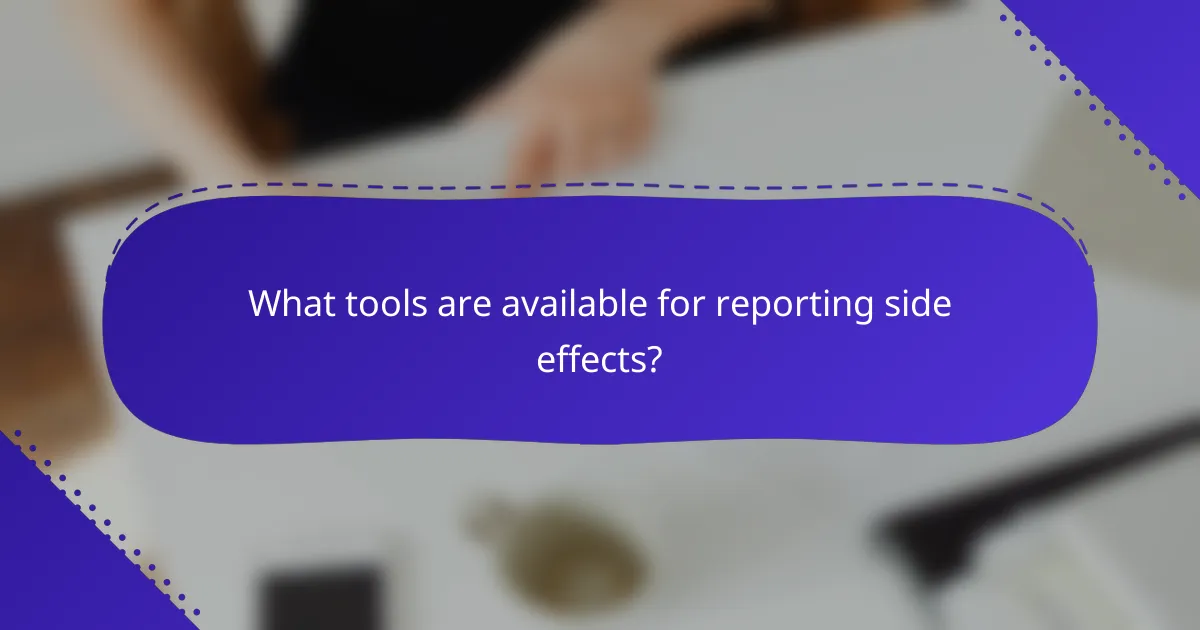
What tools are available for reporting side effects?
Patients have several tools at their disposal for reporting side effects, which are crucial for ensuring medication safety. These tools include official portals, mobile applications, and support groups that facilitate communication between patients and healthcare authorities.
Spanish Medicines Agency (AEMPS) portal
The AEMPS portal is a dedicated online platform where patients can report side effects of medications directly to the Spanish Medicines Agency. Users can fill out a simple form detailing their experiences, which helps in monitoring drug safety and efficacy.
To report a side effect, visit the AEMPS website, navigate to the reporting section, and follow the instructions provided. It is essential to provide as much detail as possible, including the medication name, dosage, and any other relevant health information.
Mobile health applications
Mobile health applications offer a convenient way for patients to report side effects on the go. Many of these apps are designed to track medication usage and symptoms, allowing users to submit reports quickly and efficiently.
When choosing an app, look for those that are endorsed by healthcare organizations or have positive user reviews. Ensure that the app provides clear guidance on how to report side effects and protects your personal information.
Patient support groups
Patient support groups provide a community for individuals to share their experiences with medications, including side effects. These groups often have resources and guidance on how to report adverse effects effectively.
Joining a support group can also help patients feel less isolated and more empowered to communicate their concerns. Many groups have established connections with healthcare professionals who can assist in the reporting process.
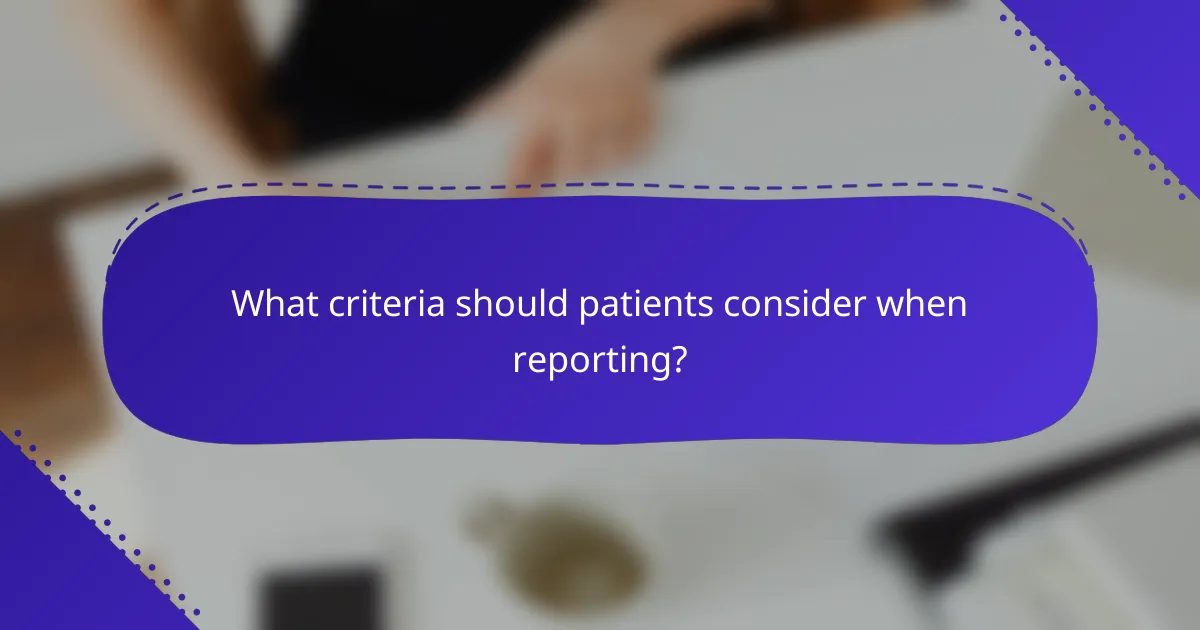
What criteria should patients consider when reporting?
When reporting side effects, patients should consider the severity, duration, and relationship of the symptoms to their medication. These criteria help healthcare providers assess the situation accurately and determine the necessary actions.
Severity of side effects
Severity refers to how intense or debilitating the side effects are. Patients should categorize their symptoms as mild, moderate, or severe. For instance, mild symptoms might include a slight headache, while severe symptoms could involve significant pain or difficulty breathing.
Understanding the severity helps healthcare professionals prioritize cases. Severe side effects may require immediate medical attention, while mild ones might be monitored over time.
Duration of symptoms
Duration is the length of time the side effects persist. Patients should note if symptoms are short-lived, lasting only a few hours, or if they are chronic, lasting days or weeks. This information is crucial for determining whether the side effects are likely linked to the medication.
For example, if a patient experiences nausea for a few hours after taking a medication, it may differ significantly from experiencing it daily for weeks. Such distinctions can guide treatment adjustments.
Relationship to medication
Establishing a clear relationship between the medication and the side effects is vital. Patients should consider whether the symptoms began after starting the medication and if they improve upon stopping it. This helps in identifying causality.
For instance, if a patient develops a rash shortly after starting a new drug, this could indicate a potential allergic reaction. Documenting these relationships assists healthcare providers in making informed decisions about treatment options.
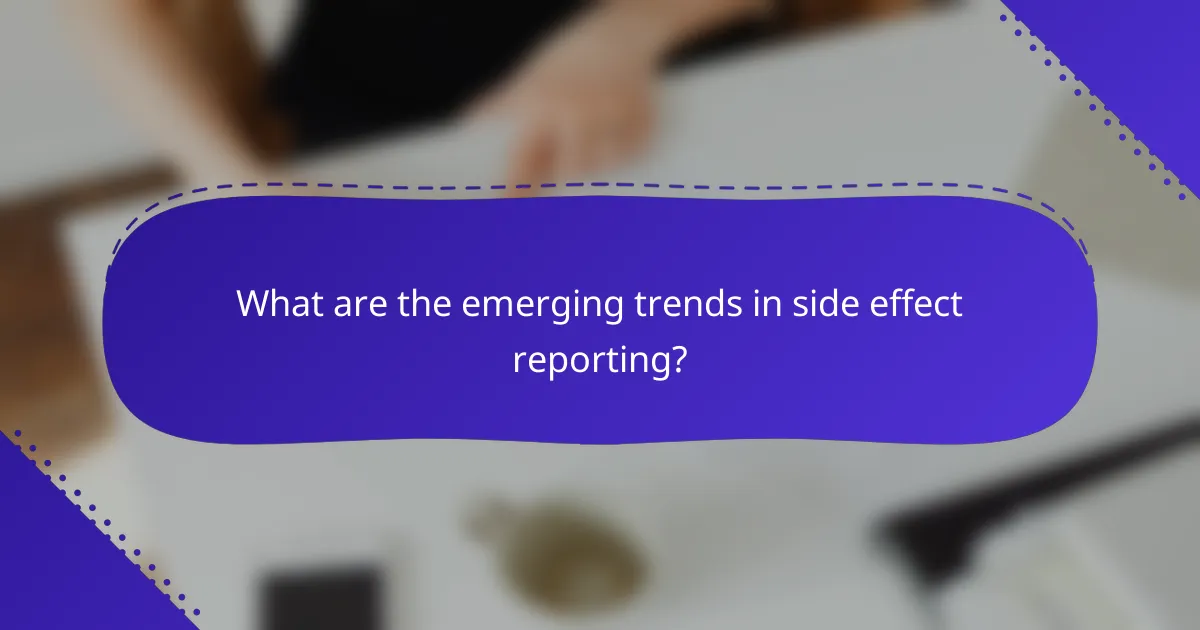
What are the emerging trends in side effect reporting?
Emerging trends in side effect reporting emphasize the importance of patient involvement and the use of digital tools. Patients are increasingly encouraged to report their experiences, which helps healthcare providers gather valuable data for improving treatments and safety protocols.
Increased Patient Engagement
Patient engagement in side effect reporting has grown significantly, with many healthcare systems actively encouraging individuals to share their experiences. This trend is driven by the recognition that patients can provide unique insights into the effects of medications that may not be captured in clinical trials.
For example, mobile apps and online platforms allow patients to easily report side effects in real-time, making the process more accessible. This shift not only empowers patients but also enhances the quality of data collected for ongoing safety evaluations.
Use of Digital Tools
The integration of digital tools in side effect reporting is transforming how information is gathered and analyzed. Electronic health records (EHRs) and dedicated reporting apps streamline the process, allowing for quicker and more efficient data collection.
These tools often include features like automated prompts for healthcare providers to ask patients about side effects during consultations, ensuring that reporting becomes a standard part of care. This digital approach can lead to more comprehensive data sets and improved patient safety outcomes.
Real-World Evidence Collection
Real-world evidence (RWE) is becoming a cornerstone of side effect reporting, as it reflects actual patient experiences outside of controlled clinical settings. This data is crucial for understanding the long-term effects of medications and identifying rare side effects that may not have been evident in trials.
Healthcare regulators are increasingly using RWE to inform their decisions, which can lead to changes in drug labeling or usage guidelines. For instance, if a significant number of patients report a specific side effect, it may prompt further investigation and potential regulatory action.





